The Most Important Stone Island Grails of All Time
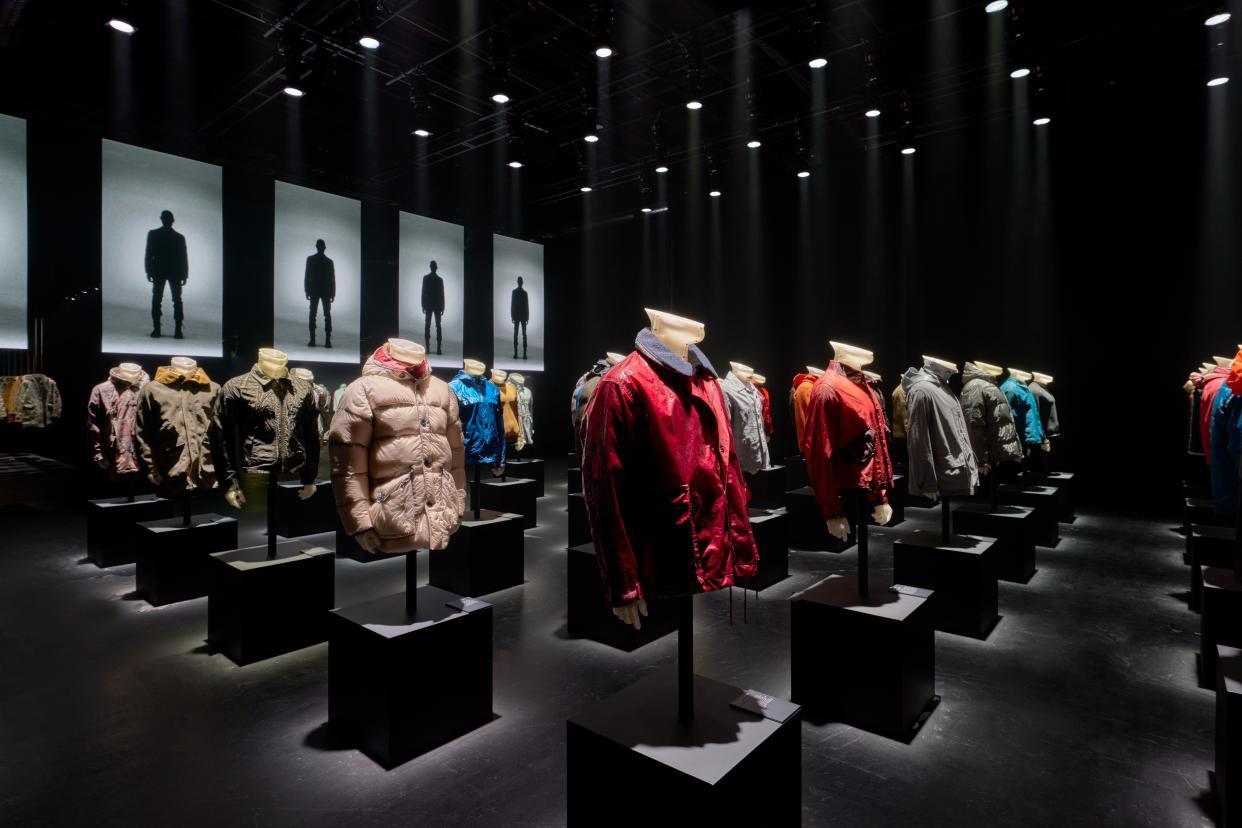
Eric Staudenmaier
For its retrospective Selected Works ‘982-’024 exhibition in Los Angeles, which opened last week, the iconic Italian sportswear label Stone Island constructed a hideout far sleeker and more menacing than anything a supervillain could’ve dreamt up. The rooms were dark and moody, lit primarily by thin spotlights that shone straight down on a sea of archival Stoney pieces, with an ominous soundtrack in the background. The space could have easily played host to a grail-obsessed big bad willing to obliterate the planet if his demand for millions of dollars—or better yet, jackets—wasn’t met.
The atmosphere was fitting for a brand defined by its willingness to innovate and push technical boundaries. Among the array of pieces on display were garments crafted from dyed kevlar and a hanging installation of 35 “pure metal jackets” that looked like armor from the future.

Stone Island’s commitment to experimentation helps explain why the exhibition went up as part of the Frieze Art Show rather than, say, Milan Fashion Week. “We're actually much more interested in intersecting with culture in a broader sense,” said Robert Triefus, Stone Island’s CEO, who recently joined the brand from Gucci. “So it makes more sense for us to be at a cultural moment like Frieze.” Triefus is part of a long tradition of Stone Island leaders endeavoring to elevate the label past the limits of mere fashion. “Carlo Rivetti [the president of Stone Island] never calls Stone Island a fashion brand,” said Arco Maher, a Stone Island archivist and creative consultant who attended the exhibit. “He always likens it to religion because there’s such a huge community who become obsessed with the brand.”
Now, Stone Island is set on spreading its religion beyond its fervent following in the UK, Europe, and Asia. “The brand isn’t properly understood in America,” Triefus said. The exhibit, where attendees were able to feel, touch, and even style the brand’s iconic outerwear on mannequins—unbuttoning, zipping, pulling up hoods—was meant to encourage Americans to join the ranks of the Stone Island faithful. After touring the exhibit last week, I came away thinking it’s an easy brand to fall for—the more you know and understand it, the more you love it. So think of this as an indoctrination. Here’s a close-up look at eight of the most important Stone Island pieces ever.
Tela Stella Zeltbhan Cape, Spring-Summer 1982
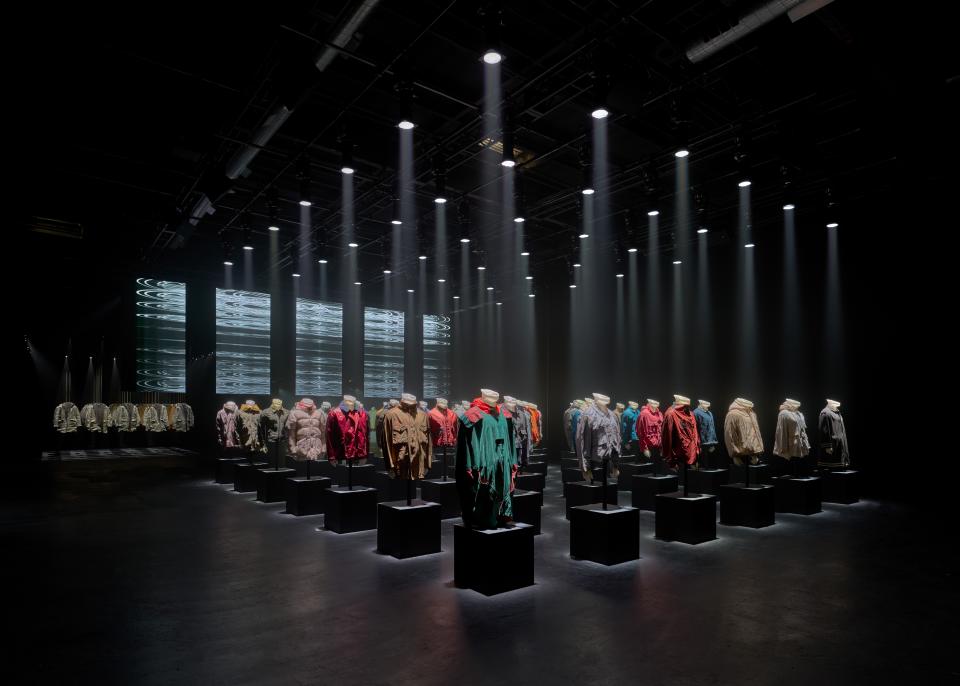
The most impressive section of Stone Island’s show was the first: a grid of 42 jackets lined up in a rigid square at the entrance. During my first solo walkthrough, I didn’t fully realize the scope of what I was seeing. The jackets followed a chronological order, with a representative piece from every year between 1982 to 2024 presented one after another. But because Stone Island has always designed for some vision of the future—where jackets need to be thermosensitive or light as mesh—it was nearly impossible to tell the archival pieces from the modern ones.
The story of Stone Island begins with this sea green and salmon parka. “The most iconic piece is the original,” said Triefus, who was wary of making any other grand proclamations. “Tela stella is the material, which is a kind of [tarp] that was used to cover the back of vehicles. From there, it leads to a thought process that powers forward all the way through.”
Ice Camo Jacket, Spring-Summer 1990
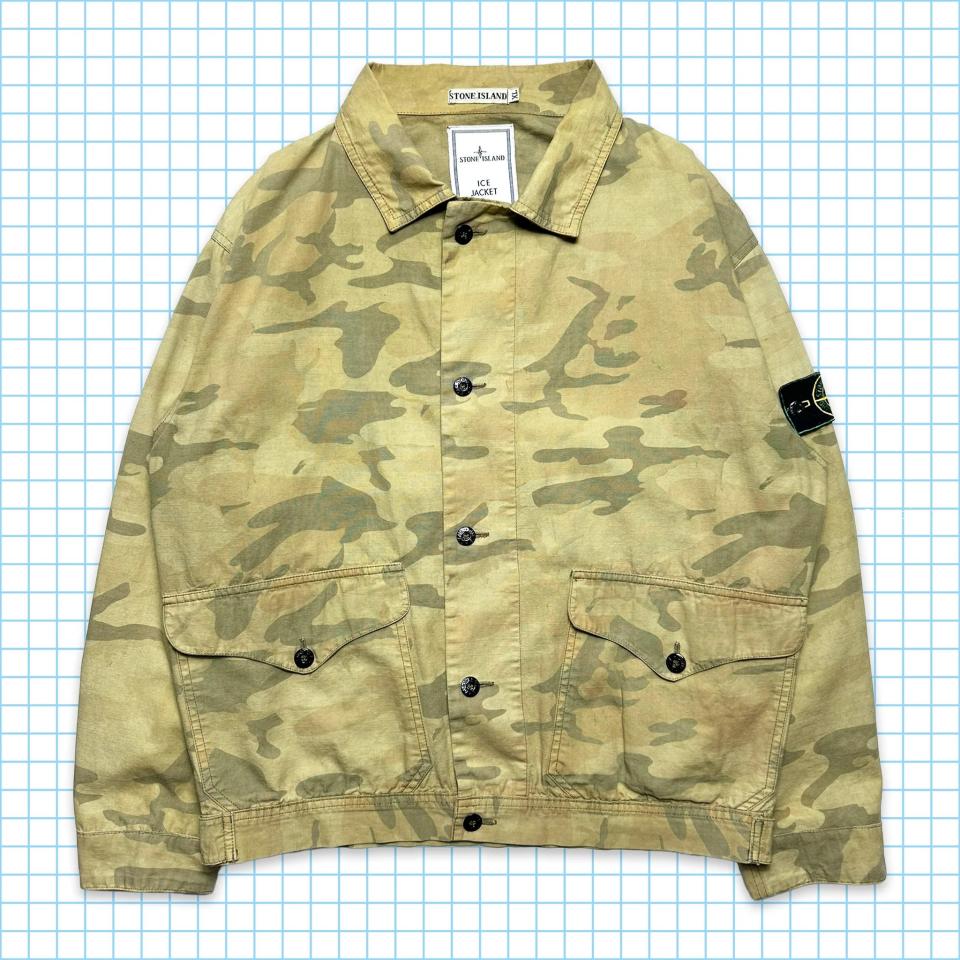
One of the coolest innovations to come out of Stone Island’s textile obsession is the suite of pieces that react to external temperatures. This jacket’s shell is printed with a coating made with liquid crystals that are sensitive to the atmosphere. As the air gets chillier, the camo print on this jacket disappears, revealing a solid taupe shade.
Glazed Silk Light “Toffee Wrapper” Jacket, Fall-Winter 1992

Maybe part of the reason Stone Island’s stuck in the UK in ways it hasn’t in the US is that the Brits just have better adjectives for describing the brand’s innovations. For example: “[The jacket] has such a mad material that kind of shimmers,” Maher said. Mad, innit? The jacket gets its unique candy-wrapper look from a nylon with a PVC coating. “It’s such an iconic piece that archivists flock to,” Maher added. Supreme also referenced this piece in its run of Stoney collaborations.
Reflective Marina Jacket, Spring-Summer 1993
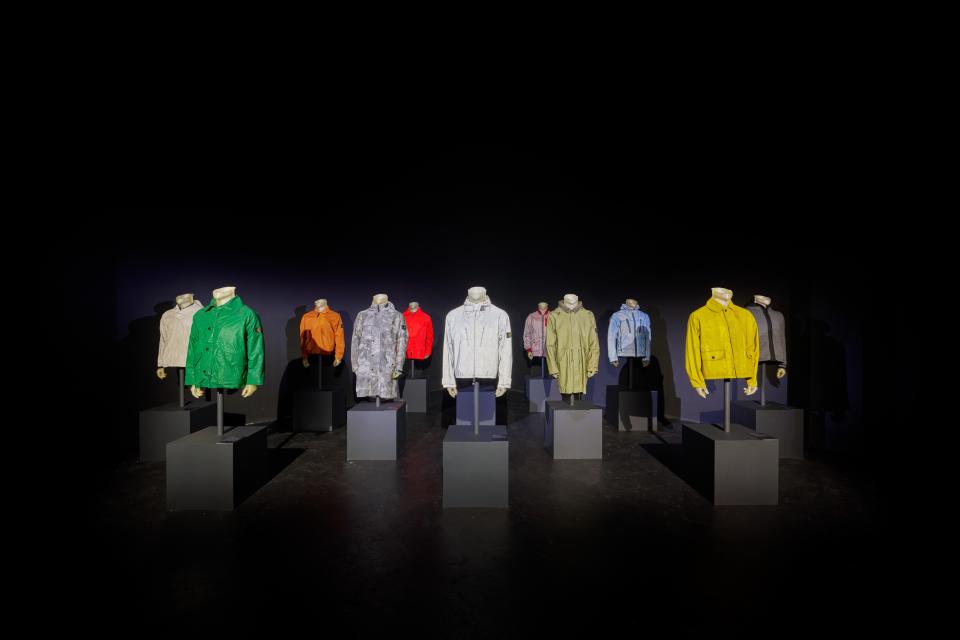
Stone Island set aside an entire section of the exhibit to show off its reflective jackets. The highlight is this jacket, over three decades old, with the word “Marina” printed on the back. Maher says they’re more performance art than garment.
The most important eras of Stone Island’s archives are divided by designer. The first is Massimo Osti, who founded the brand, and the second is his successor, Paul Harvey, who took the helm in 1996 before departing in 2008. This reflective jacket is the type of futuristic work Osti, who also founded the legendary C.P. Company, was best known for.
Pure Metal Shell Jacket, Fall-Winter 1999-2000
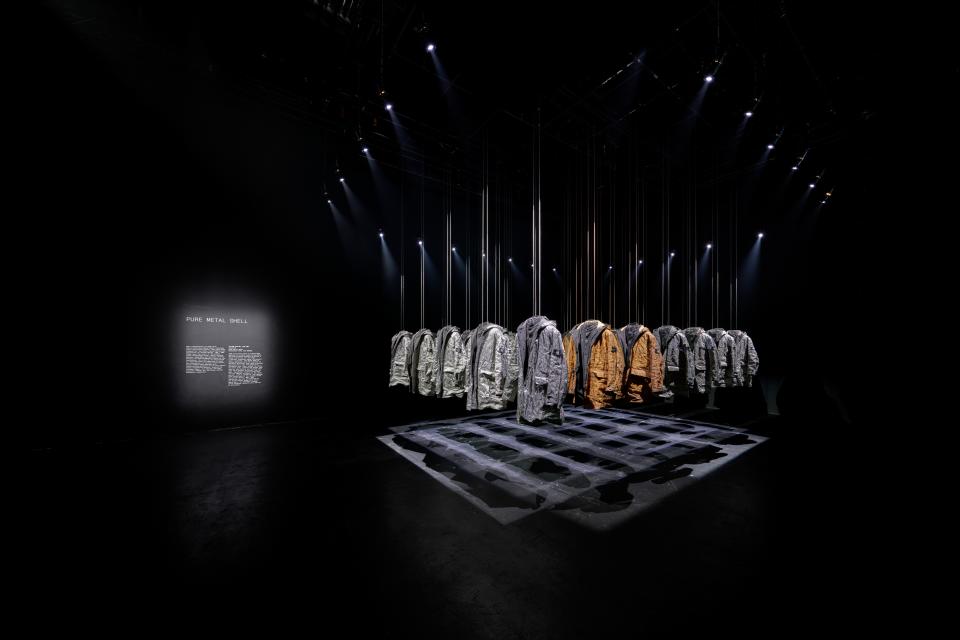
Stone Island hung 35 of these pure metal shell jackets from the ceiling at Selected Works ‘982-’024. “What we're trying to do here is create almost a sculptural installation,” Triefus explained. The jackets are made by applying either a stainless steel or bronze mesh to a nylon base. No single jacket is exactly the same as another, and that patina continues to develop as the piece is worn.
“If you wear them a lot, the metal rips and it almost turns into a different jacket,” said Maher, who has two specimens in silver and another in bronze in his collection. “And when they produced them in 2000, they always said there's no one jacket that's going to look exactly the same or have the same lifespan as the others. They'll all change in a certain way.” Maher was amazed to see so many of the jackets, which are so rare and sought after, in such pristine condition all collected in one place.
A Quick Sidebar on Stone Island’s Badges
A fun quirk of Stone Island collecting is that even the brand’s signature badges require a deep dive. Mesh badges (mostly attached to mesh garments) are rare. In Maher’s line of business, he looks for badges with a green trim that were in production from 1992 to 2000. And on pieces like the metal shell jackets, there are black-and-white badges that signify Stone Island’s advanced research items. “That was welcomed as a sign of this shit's crazy,” Maher said.
2008 “Snowflake” Tyvek Bomber Jacket, Spring-Summer 2008

Start with the lightweight tyvek material in a beautiful glacial blue colorway. Flip the jacket over to find the phrase written on the back: “In an Avalanche No Single Snowflake Feels Responsible.” Zoom in on the details like the black-and-white mesh badge—this shit’s crazy!—which nods to the advanced research that went into its development. You already have a grail with this jacket, but it gets tied with the bow of history, too: “It was the very last piece Paul Harvey designed before he left the brand,” Maher said.
Drake’s Stone Island Wimbledon Sweatshirt

Celebrities At Wimbledon 2015
This piece earns its place on the list more because of Drake’s contributions to the brand than Stone Island’s technical textile wizardry. Drake’s name came up much more frequently at Selected Works ‘982-’024 than I expected. “This brand came to America through two principal occurrences,” Triefus said. “One was Drake.”
Drake was serious about his Stone Island, according to Maher. “I worked with Drake and sold him about 45 archive pieces in 2018,” he said. “We flew out to his place in LA. He tried all the pieces, he absolutely loved them all. He then came back to London six months later and bought some more. His knowledge on Stone Island was insane. He had genuine interest in it. He had the Stone Island book on his coffee table.”
Drake came into contact with Stone Island while immersing himself in the UK’s grime music scene. He started wearing the brand frequently and followed Wimbledon’s white uniform with a creamy Stoney sweater in 2015.
Supreme x Stone Island Raso Gommato Cover Nero Jacket, Fall-Winter 2014

If Drake was one important player in bringing Stone Island stateside, Supreme was the other. “It was very hard to translate to the US customer what Stone Island was,” Maher said. “And then, in 2014, we see the Supreme collaboration, which I feel is the entry point for most of the US crowd.” The highlight of the first collection is what’s known as the “Helicopter” jacket. It took inspiration from a 1988 Stone Island garment and came in one of the brand’s signature military-inspired fabrics, Raso Gommato. A fitting way to introduce Americans to such an advanced cult label.
Originally Appeared on GQ

